Editor's note: Early morning on April 3 (Vietnam time), US President Donald Trump announced reciprocal tax rates on all countries in the world . Many countries are subject to higher tariffs. Specifically, China faces a 34% tariff (plus the previously announced 20% tariff, for a total of 54%, effective from April 9), the European Union (EU) 20%, Vietnam 46%, and Taiwan (China) 32%... This policy will have a strong impact on international trade, including Vietnam. VietNamNet recorded opinions from associations and experts on this new development. |
The 46% tax rate given by the US side is an overview figure.
Mr. Vu Duc Giang - Chairman of the Vietnam Textile and Apparel Association (VITAS), said that the issue of the US imposing tariffs on imported goods from Vietnam needs to be viewed thoroughly, avoiding panic or excessive worry.
According to Mr. Giang, the basic tax rate for Vietnamese textile products exported to the US has existed for a long time, not all of them are 0%. Some items have an average tax rate of 12%, some items have 7%, 12%, even jackets have up to 27%.
Vietnam also does not have a Free Trade Agreement (FTA) with the US, so the tax base has existed for a long time.
Mr. Giang noted that the information about the 46% tax rate given by the US is an overview figure, not applied uniformly but divided according to each specific product line.
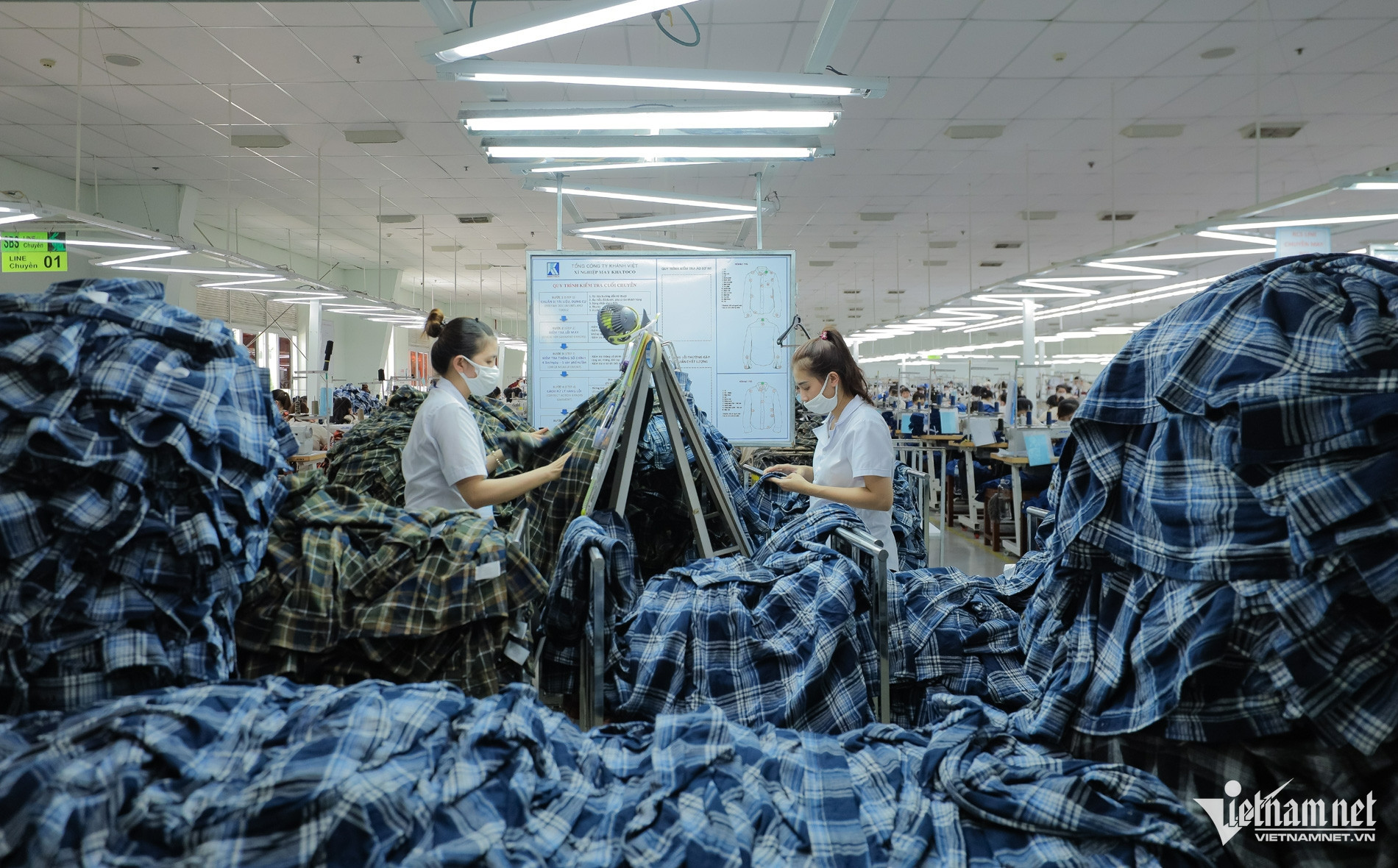
VITAS Chairman recommends that businesses stay calm and not worry too much. Photo: Xuan Ngoc
The Chairman of VITAS said that the Government is implementing negotiation measures to have a suitable tax schedule, ensuring benefits for businesses. The US announcement of imposing taxes from April 5 is their point of view. However, to have a long-term and sustainable tax policy, a negotiation process between the two Governments is needed.
"Businesses and industry associations need to wait for the results of this negotiation process," Vitas leaders shared.
Moreover, not only Vietnam, many other exporting countries are also subject to US taxes, typically China has been subject to taxes of over 20%, even over 30%.
Therefore, the Textile and Apparel Association recommends that businesses should remain calm and continue negotiating with brands and buyers to adapt to the new tax rate. American consumers still have a large demand for textile and garment products and Vietnam is still maintaining relationships with many major partners around the world, including the US.
Regarding the practical impact, Vietnamese businesses have negotiated prices with buyers in advance, so when taxes change, brands and labels themselves must also consider their business strategies to adjust. He believes that American consumers will be directly affected by increased product prices.
In the medium and long term, businesses need to wait for negotiations between the two governments this April to have appropriate response plans.
"Textile and garment enterprises need to maintain a stable mentality and focus on agreements with partners, because production costs, wages, and profits have all been carefully calculated in the order. The biggest pressure is not on the enterprise but on the buyer and consumer when taxes increase.
In the coming time, there will be detailed tax schedules for each item such as automobiles, textiles, footwear, etc. Businesses need to follow closely to have appropriate plans," Mr. Vu Duc Giang emphasized.
As soon as US President Donald Trump announced the imposition of a 46% reciprocal tax on Vietnamese exports, the leader of the Vietnam Association of Seafood Exporters and Producers (VASEP) said that the agency is making a report and proposing to the Government and relevant ministries and agencies solutions to ensure smooth seafood export activities.
Currently, Vietnam's seafood export turnover to the US fluctuates from 1.5-2.1 billion USD/year, in which shrimp and pangasius are the two main export products.
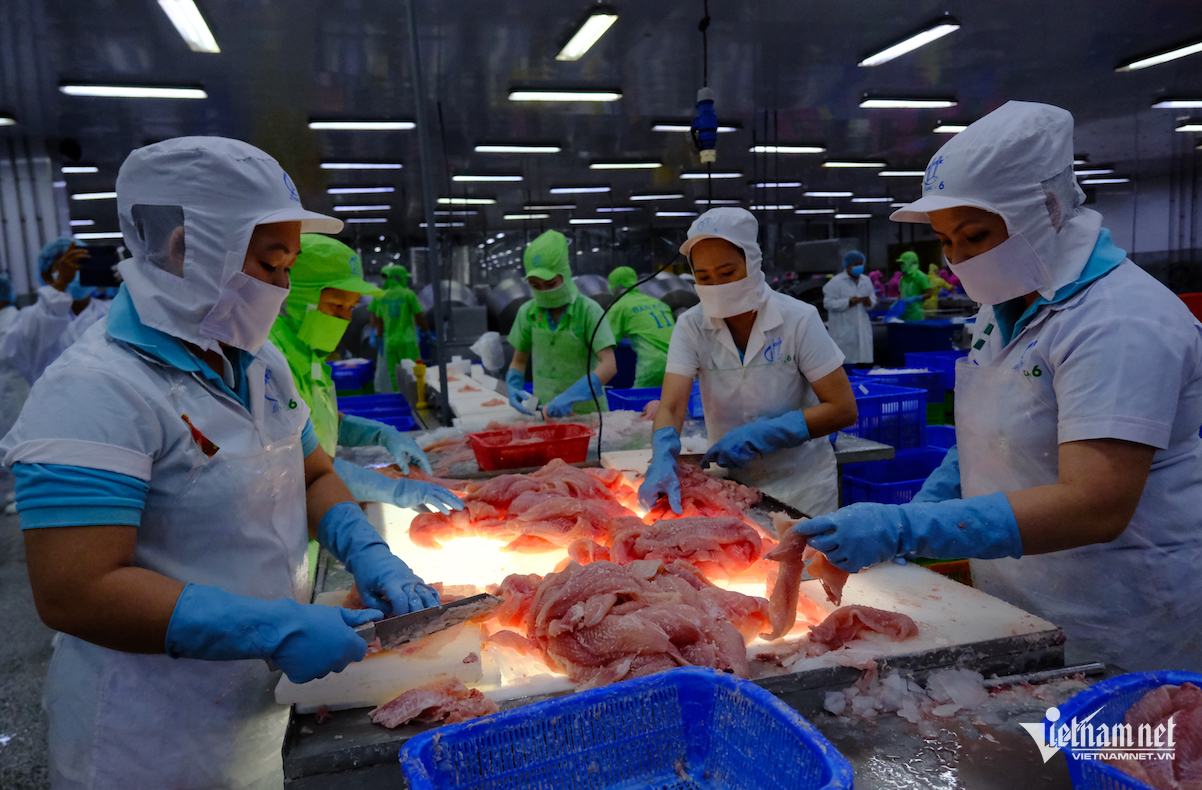
Pangasius is one of Vietnam's key products exported to the US. Photo: Hoang Giam
Efforts to balance trade with the US
In fact, over the past time, Vietnam has been making efforts to improve its trade balance with the US.
During his recent working trip to the United States, working with the Office of the United States Trade Representative (USTR), the Department of Energy (DOE) and relevant agencies, Special Envoy of the Prime Minister, Minister of Industry and Trade Nguyen Hong Dien attended the signing ceremony and announcement of cooperation agreements, contracts for purchasing machinery, equipment, raw materials, services and goods between Vietnamese and American enterprises.
Accordingly, the total value of economic and trade agreements signed between Vietnamese and US enterprises is expected to be implemented from 2025 at about 90.3 billion USD, creating hundreds of thousands of jobs for workers in both countries.
On March 31, the Government also issued a Decree amending and supplementing preferential import tax rates for a number of goods. Accordingly, a series of goods are subject to reduced import tax, such as cars, cherries, apples, raisins, etc., including many products of American origin.
According to experts, the plan to reduce taxes on some imported goods is an important part of the Government's efforts to promote the import of products from the US to Vietnam, contributing to reducing the trade surplus between the two countries.
Previously, representatives of the Vietnamese and US governments also met many times to negotiate new trade measures and adjust policies to deal with tariff risks.
Sharing with VietNamNet reporter , Dr. Hoang Ngoc Thuan, Foreign Trade University, commented that the US decision to impose a 46% tax on Vietnamese goods will create mixed impacts, even though it does not apply to all goods.
According to Mr. Thuan, American manufacturing enterprises whose products compete with Vietnamese goods will benefit greatly from this tax rate. In addition, the US government budget will also increase significantly due to import tax collection.
However, most other stakeholders will be negatively affected. American consumers and businesses that use imported goods as inputs for production will bear the cost of increased tariffs.
Not only in the US, Vietnam and other countries are also negatively affected. In particular, the 46% tax rate for Vietnam is higher than that of Indonesia or Thailand, making the goods of these countries more competitive in terms of price. Consumers are often price-sensitive, so they tend to choose products with lower price increases.
However, Mr. Thuan said that in this context, businesses need to stay calm and proactively find solutions, while waiting for moves from the Government.
Previously, Canada, Mexico and India had negotiated with the US on the tax issue. Vietnam also needs to make efforts to negotiate to delay the tax imposition or get a more favorable tax rate. However, it is very unlikely that the US will not impose taxes at this time.
If the tax rate cannot be changed or delayed, businesses must prepare mentally and have a response plan. According to Dr. Thuan, depending on the business sector, businesses need to have appropriate responses to adapt to the new tax rate. Some businesses may lose market share or market, so in addition to waiting for negotiations from the Government, they need to proactively recalculate the supply chain and look for alternative markets.
Referring to the current measures, Associate Professor Dr. Nguyen Thuong Lang, lecturer at the Institute of International Trade and Economics (National Economics University), said that Vietnam needs to step up the search and expansion of import markets, reducing its over-reliance on one market. However, it is still necessary to strengthen cooperation with US businesses; increase the import of high-end medical equipment, liquefied gas, consumer goods, agricultural products for animal feed production, etc.
Vietnamnet.vn
Source: https://vietnamnet.vn/my-muon-ap-thue-46-voi-hang-viet-nam-tranh-hoang-mang-hay-lo-lang-thai-qua-2387420.html



![[Photo] Prime Minister Pham Minh Chinh and Prime Minister of the Kingdom of Thailand Paetongtarn Shinawatra attend the Vietnam-Thailand Business Forum 2025](https://vphoto.vietnam.vn/thumb/1200x675/vietnam/resource/IMAGE/2025/5/16/1cdfce54d25c48a68ae6fb9204f2171a)






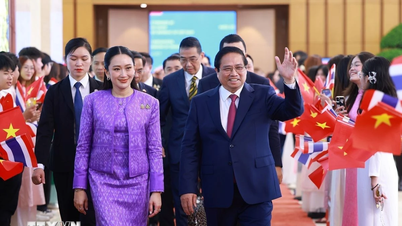

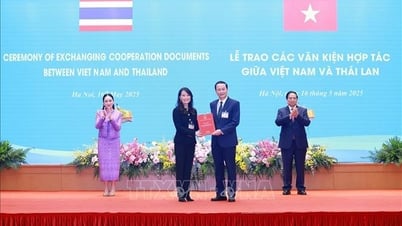



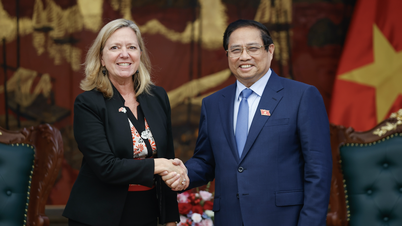




















![[Photo] President Luong Cuong receives Prime Minister of the Kingdom of Thailand Paetongtarn Shinawatra](https://vphoto.vietnam.vn/thumb/1200x675/vietnam/resource/IMAGE/2025/5/16/52c73b27198a4e12bd6a903d1c218846)





















































Comment (0)